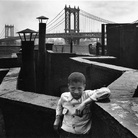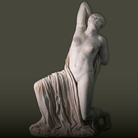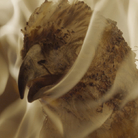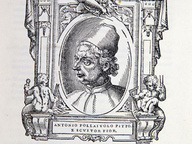Jakob Tuggener. FABRIK 1933–1953 / NUITS DE BAL 1934–1950

© Jakob Tuggener Foundation, Uster | Jakob Tuggener, Untitled, Tornos, Moutier, 1942
Dal 27 January 2016 al 17 April 2016
Bologna
Luogo: Fondazione MAST
Indirizzo: via Speranza 42
Orari: da martedì a domenica 10-19
Curatori: Martin Gasser, Urs Stahel
Enti promotori:
- Fondazione MAST
- In collaborazione con
- Fondazione Jakob Tuggener Uster
- Fondazione Svizzera per la fotografia Winterthur
Telefono per informazioni: +39 051 647 4345
E-Mail info: staff@fondazionemast.org
Sito ufficiale: http://www.mast.org
La Fondazione MAST presenta due mostre dedicate al fotografo svizzero Jakob Tuggener (1904-1988), per la prima volta in Italia.
Con Jakob Tuggener si apre il ciclo di mostre fotografiche del 2016 proposte dalla Fondazione Mast che promuove speciali esposizioni sui temi dell’industria e del lavoro, sia con immagini della propria collezione di fotografia industriale, sia con opere di raccolte private o archivi spesso inediti.
“Jakob Tuggener è considerato uno dei dieci fotografi industriali di maggior spicco che siano mai esistiti -sottolinea Urs Stahel, direttore della PhotoGallery del MAST e co-curatore della mostra -.
Il suo libro FABRIK è una pietra miliare nella storia dell’editoria fotografica, paragonabile a Paris de nuit di Brassaïs del 1933 e a The English at Home di Bill Brandt del 1936”.
“Il tratto distintivo della sua opera - continua Stahel - è rappresentato da uno sguardo penetrante sulle persone e sugli oggetti del mondo così ravvicinato e attento come se volesse sorprenderli, unito a una grande padronanza del gioco di luci e ombre”.
La mostra FABRIK 1933–1953 presenta nella Photogallery del MAST oltre 150 stampe originali del lavoro di Tuggener, sia tratte dal suo importante libro fotografico FABRIK - saggio unico nel suo genere con un approccio critico di grande impatto visivo e umano sul tema del rapporto tra l’uomo e la macchina - sia da altri scatti dell’artista che affrontano momenti del lavoro nel suo paese.
“Tuggener è stato al tempo stesso fotografo, regista e pittore. Ma si considerava anzitutto un artista - afferma Martin Gasser, co-curatore della mostra -. Influenzato dal cinema espressionista tedesco degli anni Venti, sviluppò una cifra artistica estremamente poetica destinata a fare scuola nel secondo dopoguerra. FABRIK consolidò la fama di Tuggener quale eccezionale fotoartista, aprendogli le porte di prestigiose esposizioni collettive come ‘Postwar European Photography’ del 1953 e ‘The Family of Man’ del 1955 al Museum of Modern Art di New York, o la ‘Prima mostra internazionale biennale di fotografia di Venezia’ del 1957.” In FABRIK Tuggener, oltre a ripercorrere la storia dell’industrializzazione, aveva come finalità, non sempre svelata, di illustrare il potenziale distruttivo del progresso tecnico indiscriminato il cui esito, secondo l’autore, era la guerra in corso, per la quale l’industria bellica svizzera produceva indisturbata.
Le proiezioni NUITS DE BAL 1934–1950 al livello 0 del MAST presentano immagini di balli ed altre occasioni mondane. Tuggener affascinato dall’atmosfera spumeggiante delle feste dell’alta società aveva iniziato a fotografare a Berlino le dame eleganti e i loro abiti di seta, ma è a Zurigo e a St Moritz che con la sua Leica, indossando lo smoking, ha colto le misteriose sfaccettature delle NUITS DE BAL. Riprendeva con il suo obiettivo anche “il lavoro invisibile” dei musicisti, dei camerieri, dei cuochi, dei valletti, dei maître, che attraversavano silenti il mondo festoso ed autoreferenziale degli incuranti ospiti. Questi ultimi osteggiarono la pubblicazione del materiale dedicato ai balli, in quanto preferivano rimanere anonimi e non essere visti in intrattenimenti danzanti.
“È stato soprattutto il contrasto tra la luminosa sala da ballo e il buio capannone industriale a caratterizzare la percezione della sua opera artistica. Il fotografo stesso, affermando: ‘Seta e macchine, questo è Tuggener’, si collocava tra questi due estremi - spiega ancora Gasser - . Di fatto amava entrambi, il lusso sfrenato e le mani sporche dal lavoro, le donne seducenti e gli operai sudati. Li riteneva di egual valore artistico e rifiutava di essere classificato come un critico della società che contrapponeva due mondi antitetici. Al contrario, gli opposti rientravano appieno nella sua concezione della vita: amava vivere intensamente gli estremi, senza tralasciare le sfumature più tenui tra i due poli”.
Accanto alle 150 immagini delle fabbriche e allo slide show del lavoro sui balli, MAST propone una raccolta di “menabò” di libri fotografici, che lo stesso Tuggener impaginava manualmente.
Inoltre per rappresentare l’eclettismo e l’eccezionalità di questo artista, il percorso è arricchito da filmati caratterizzati da una regia dinamica e una tecnica di montaggio che deve molto alle teorie di Ejzenštejn, con passaggi dal campo totale al primo piano:
PROIEZIONI – Continue
MEETING AEREO, 1937, 6’
IL POLSO DEI TEMPI NUOVI, 1938, 12’
IL MULINO DEL LAGO, 1944, 5’
L’ERA DELLA MACCHINA, 1938-70, 30’
SCARICA IL COMUNICATO IN PDF
COMMENTI

-
 Dal 2 December 2025 al 19 February 2026
Milano | Centro Culturale di Milano
Dal 2 December 2025 al 19 February 2026
Milano | Centro Culturale di Milano
Walter Rosenblum. Il mondo e la tenerezza
-
 Dal 30 November 2025 al 12 April 2026
Gallarate | Museo MA*GA
Dal 30 November 2025 al 12 April 2026
Gallarate | Museo MA*GA
Kandinsky e l’Italia
-
 Dal 29 November 2025 al 12 April 2026
Roma | Musei Capitolini
Dal 29 November 2025 al 12 April 2026
Roma | Musei Capitolini
La Grecia a Roma
-
 Dal 22 November 2025 al 3 May 2026
Torino | Sale Chiablese dei Musei Reali
Dal 22 November 2025 al 3 May 2026
Torino | Sale Chiablese dei Musei Reali
Orazio Gentileschi. Un pittore in viaggio
-
 Dal 20 November 2025 al 25 January 2026
Firenze | Palazzo Strozzi
Dal 20 November 2025 al 25 January 2026
Firenze | Palazzo Strozzi
Andro Eradze. Bones of Tomorrow
-
 Dal 21 November 2025 al 28 March 2026
Cuneo | Complesso Monumentale di San Francesco
Dal 21 November 2025 al 28 March 2026
Cuneo | Complesso Monumentale di San Francesco
La Galleria Borghese. Da Raffaello a Bernini. Storia di una collezione


